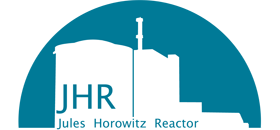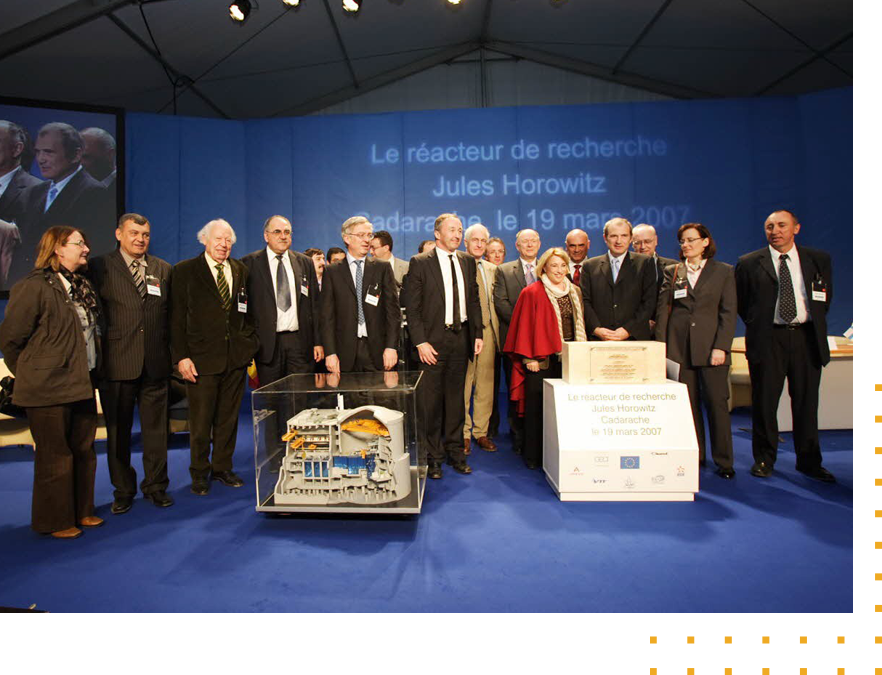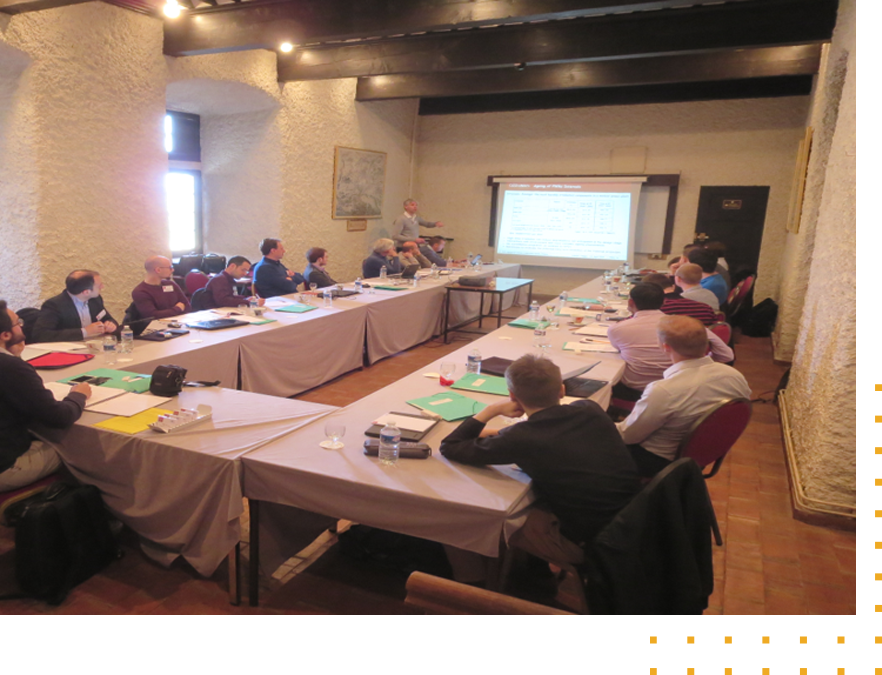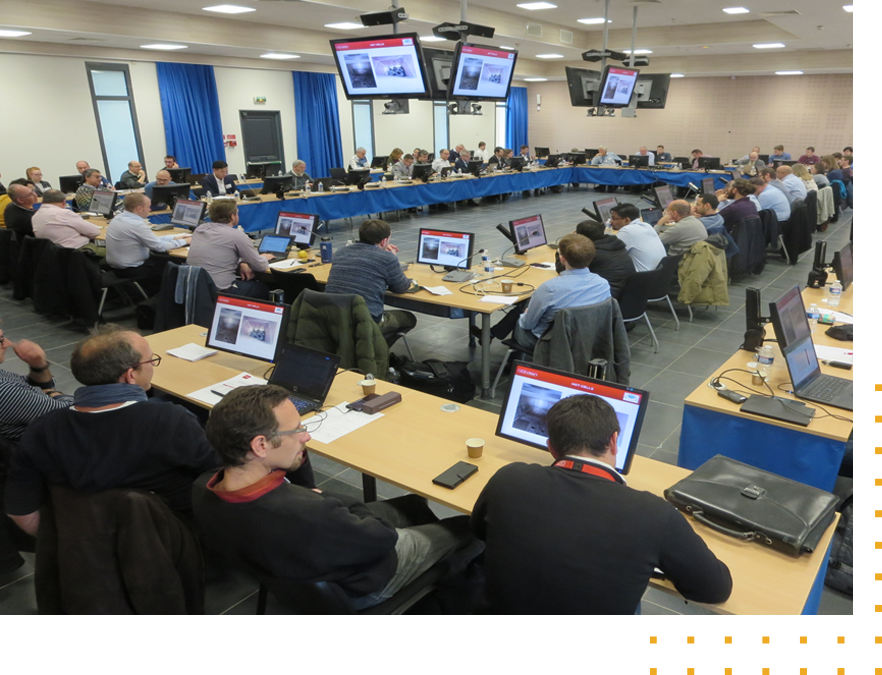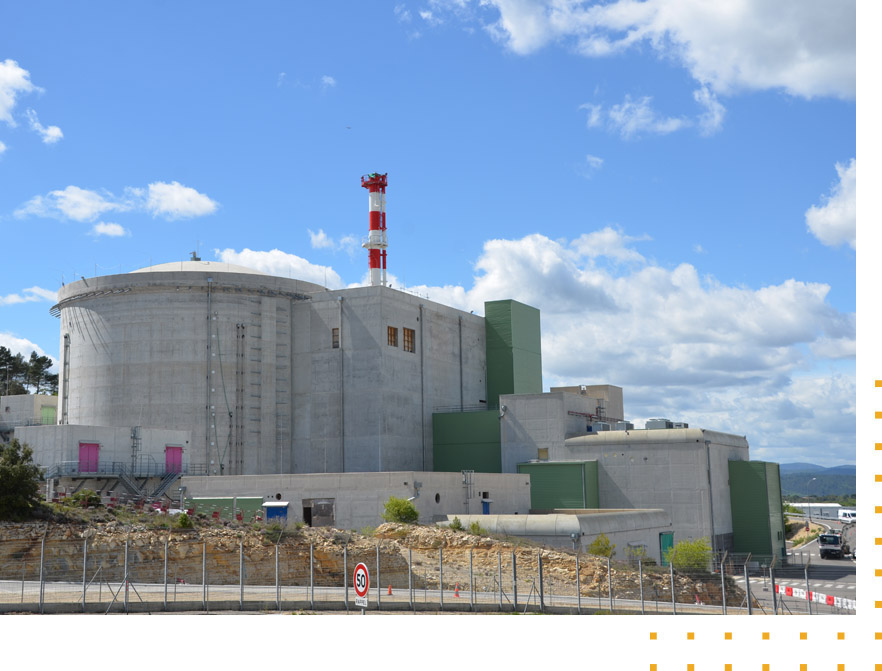
What is the JHR?
The JHR Material Test Reactor is currently under construction at the CEA Cadarache centre.
The JHR Material Test Reactor project is sponsored by several international partners. Once commissioned, this unique experimental irradiation tool in Europe will not only be available to the nuclear industry and research organisations, but also to nuclear safety authorities and their technical support bodies.
The JHR Material Test Reactor is a high-performance material test reactor designed to generate up to 100 Mwth. It will have the capacity to handle around 20 material and fuel experiments at the same time, as well as to produce radioisotopes, mainly for the medical industry.
IT WILL MEET NUMEROUS SCIENTIFIC,
TECHNICAL AND SOCIETAL NEEDS
IT WILL MEET NUMEROUS SCIENTIFIC,
TECHNICAL AND SOCIETAL NEEDS

Improving the nuclear safety, competitiveness
and life span of current nuclear power plants
intended for long-term operation

Developing nuclear fuels
to support the development of Generation III reactors
with enhanced performance and nuclear safety

Developing new nuclear fuels
and materials
for future nuclear power systems.

Understanding the behaviour of
fuel and structural materials
in incident and accident conditions
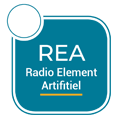
Producing radioisotope needed for diagnosis and therapy
in the medical industry.
From this perspective, the JHR Material Test Reactor will provide long-term experimental capabilities for 50 years after reaching its first criticality.
.
Why is the JHR necessary?
The CEA began exploring the possibility of designing and building a new reactor to replace its material test reactor called Osiris* in the 1980s and 1990s.
The emergence of the JHR Material Test Reactor was driven by the following objectives:
• Providing R&D to support the operation of the French nuclear fleet and international infrastructures
• Understanding the physical and chemical phenomena associated with the behaviour of fuel and structural materials under neutron irradiation, and enhancing nuclear safety for the French fleet and other nuclear facilities
• Securing a just-in-time production of radionuclides for medical purposes in France and Europe.
Research reactors in Europe have been essential in supporting nuclear power programmes over the past 50 years in Europe.
By the end of this decade, most of these research reactors will have been operating for more than 50 years. This and various other reasons such as service-life-limiting factors, heavy maintenance requirements or new regulatory requirements, will eventually call for their final shutdown in the years to come.
As a modern international research infrastructure, the JHR Material Test Reactor will therefore contribute to the development of expertise and know-how in numerous fields, in addition to training the next generation of scientists and operators. This will further consolidate nuclear safety, the industry’s competitiveness and further development of nuclear energy.

WHY CALL IT THE JHR?
The JHR Material Test Reactor was named after the renowned physicist Jules Horowitz who was born on 3 October 1921 in Rzeszów, Poland.
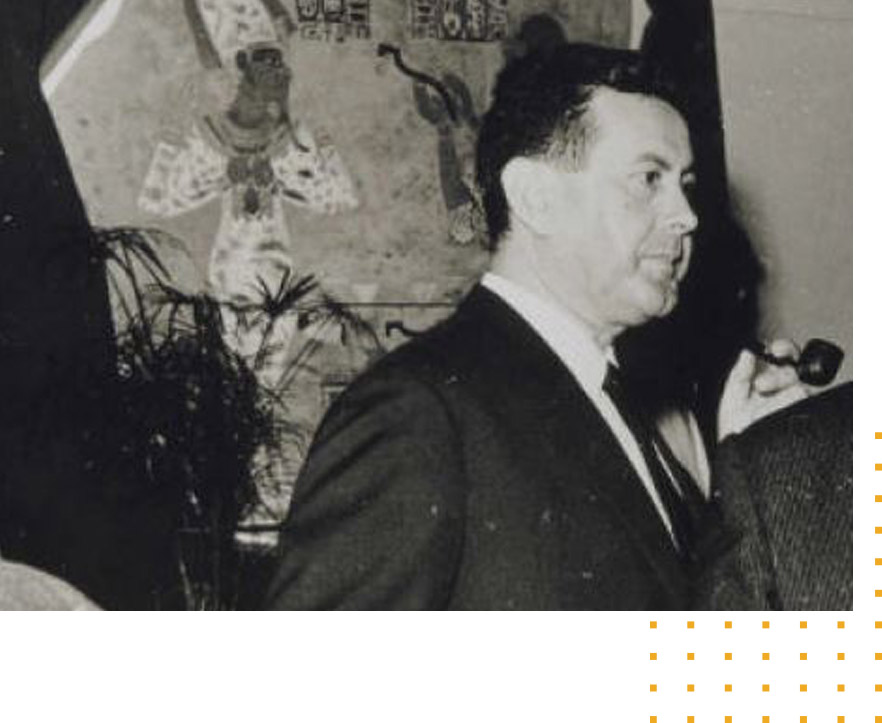
The climate of anti-Semitism prevailing at the time in Poland led his father, an expert in the Old Testament and the Aramaic language, to move the family to Germany. However, the rise of Nazism forced the family once again to leave, and they eventually settled in Metz.Jules Horowitz soon showed promise in his studies and was accepted into the prestigious Polytechnic School in 1941. However, after invasion of the zone libre (“free zone”) and the relocation of the Lyon Polytechnic School to Pars, the racial laws then in force barred his access. He therefore attended the Faculty of Sciences in Lyon, waiting for liberation to finish his studies at the Polytechnic School.
He soon began working for the newly created CEA as engineering the physics and mathematics section, that he managed from 1949 where he was able to conduct some of the neutronic calculations for the first French atomic reactor Zoe*.
Outstanding mathematician, he became director of the Atomic Reactor Department (1959) and then Director of the Atomic Reactors Division (1962). From 1970 to 1986, he led and developed fundamental research at the CEA. He knew how to federate teams, develop defining ideas and train the next generation of engineers in nuclear physics in France. His work in various research laboratories were decisive in the development of several major instruments, such as the high flux reactor at the Laue-Langevin Institute in Grenoble, the Orphée reactor at Saclay (Paris), the Ganil heavy ion accelerator in Caen, and the Tore-Supra machine for studying thermonuclear fusion at Cadarache (Saint-Paul-lez-Durance). He helped implement the European thermonuclear fusion reactor programme, JET, for which he was the council chairman from 1984 to 1987. He also chaired the management board of the European Synchrotron Radiation Facility at the time of its inception (1989-1992).
Following in the footsteps of previous French research reactors, the JHR Material Test Reactor pays tribute to one of the great pioneers of nuclear research in France.
WHERE IS THE JHR?
The JHR Material Test Reactor is being built in the south of France
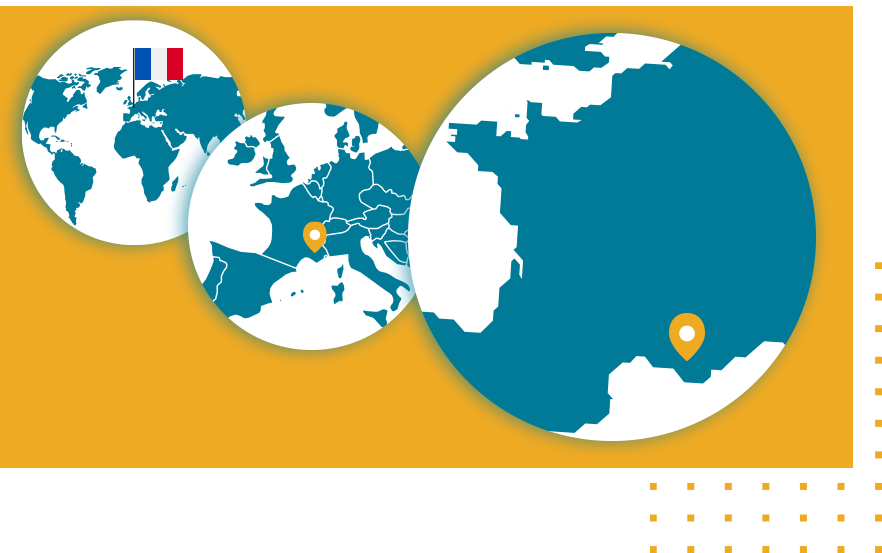
Initiated by France and entrusted to the CEA, the JHR Material Test Reactor is being built at the CEA Cadarache centre. Once operational, is set to become one of the main energy research platforms in Europe.
The Cadarache research centre has both the necessary infrastructures and research skills needed to host this project, having built up a high level of expertise in the fields of fission energy and nuclear reactors.
The exact location inside the Cadarache centre was chosen on the basis of documented studies (geological, hydrogeological, geotechnical), data collected on site (core samples and in situ testing), and analyses performed in soil mechanics laboratories. The Bargette-Est area located midway along the ‘reactor valley’ road on the CEA Cadarache centre was finally chosen for construction of the JHR Material Test Reactor.
WHAT WILL THE JHR DO?
WHAT WILL THE JHR DO?
The JHR Material Test Reactor will be operated as an international facility for the project’s partner users and open to international collaboration.
Its operation will be based on:
• Partnerships with the funding organisations brought together within an international consortium,
• Development of an international scientific community around the JHR, involving the organisation of seminars and working groups to fully exploit its experimental capacity and to meet any future R&D requirements,
• Preparation of the first JHR International Programme potentially open to non-members of the JHR consortium, especially through international agencies such as the OECD/NEA, IAEA and the European Commission.

International research reactor activities
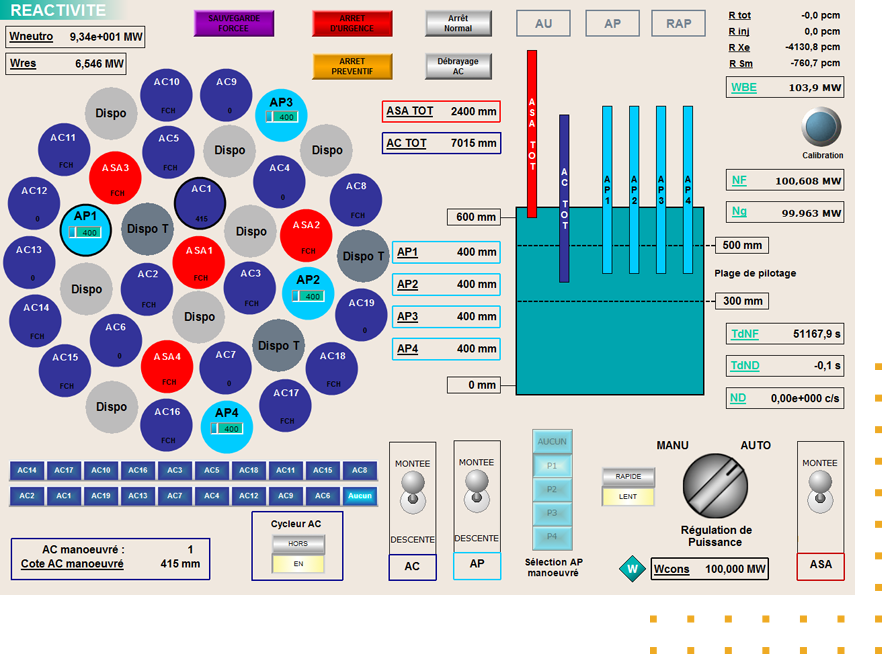
Performing tests on materials and fuels
The JHR Material Test Reactor will offer state-of-the-art experimental irradiation capabilities to study structural materials and fuel behaviour under irradiation.
The JHR Material Test Reactor has been designed to generate a high neutron flux to comply with the best international standards to:
• Carry out experiments that have been equipped with extensive instrumentation,
• Support the advanced modelling of phenomena to be able to predict behaviour beyond that demonstrated by experimental means,
• Operate experimental devices that provide the experimental conditions (pressure, temperature, flux, coolant chemistry, etc.) representative of pressurised water reactors (PWRs, BWRs, VVERs), while supporting R&D on other reactor technologies such as sodium-cooled fast reactors, etc.
The experiments defined in the programme will answer needs and objectives expressed by the scientific community and the industry by:
• Providing multilateral support to complete cost-effective studies, avoiding the fragmentation of scientific research efforts,
• Enabling developing countries to access such a cutting-edge research reactor,
• Broadening its potential to include a supranational approach,
• The JHR Material Test Reactor is destined become a major scientific hub for cutting-edge research and material testing.
Producing radioisotope for nuclear medicine
There are different solutions available worldwide to produce artificial radioisotope, i.e. by accelerators, nuclear reactors or research reactors such as the JHR Material Test Reactor.
However, the need for artificial radioisotope has been increasing year after year, especially for nuclear medicine where radioisotopes are used for examinations (diagnostics) and cancer treatment (therapy).
The JHR will meet part of the demand, complying with the following objectives:
• Producing radioisotope not for the medical sector, but also for other applications
• Securing the production of medical radioisotope :
• Producing between 25% (representing about 2 billion patients diagnosed) and 50% of European yearly requirements
• Producing therapeutic radioelement as soon as the reactor has been commissioned in order to foster future medical progress.
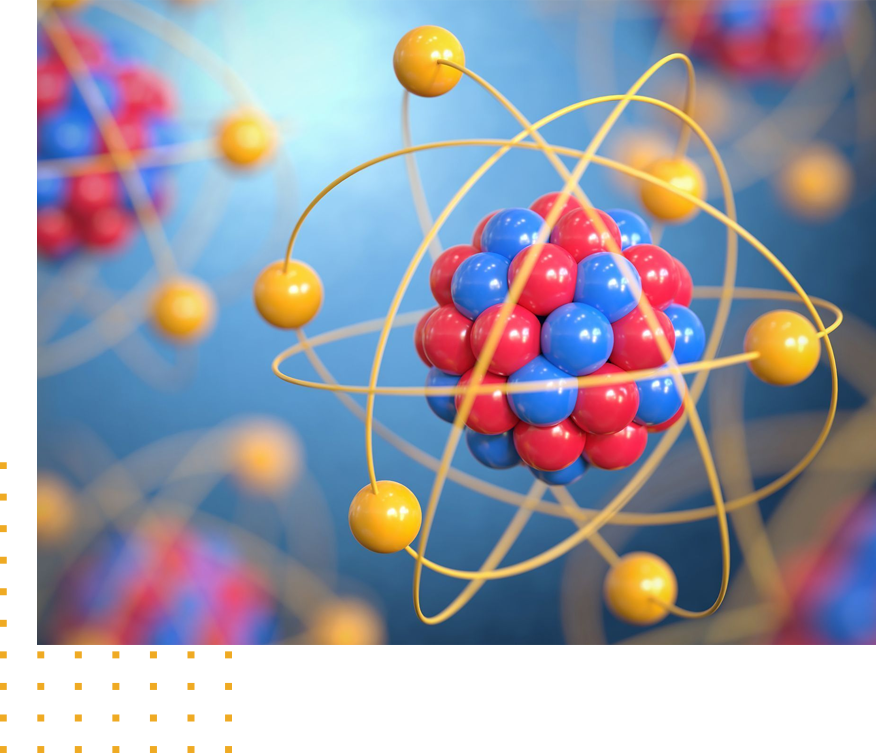
The JHR Material Test Reactor has been designed to produce artificial radioisotope by way of fission or neutron capture, depending on the market needs and cost-effectiveness of the production means.
Fission
Neutron activation or neutron capture
Teaching and training
At the CEA Cadarache Centre, the JHR Material Test Reactor experimental team is already welcoming scientists and engineers (secondees) from various organisations and institutions.
These secondees become part of the team for a defined period (typically one year). They are asked to work in various fields, e.g. physics to help develop experimental devices (neutron physics, thermohydraulics, etc.), and/or to support the future operator in areas such as nuclear safety analysis or smart I&C systems.
This secondee programme is an opportunity for countries willing to invest in nuclear technology, helping them to create and sustain key skills.
Somewhere between traditional academic education and ‘commercial training linked to a product’, there needs to be a framework for teaching nuclear-related subjects that can benefit decision-makers in countries intending to develop nuclear energy.
The JHR secondee programme provides in-the-field nuclear experience, offering the possibility for hands-on work in real nuclear facilities. This kind of training can fill the gap between academic education and technical product-specific training, for all types of practices existing in such reactors. This is fully compliant with the recent IAEA initiative, which sets out to certify ‘International Centres based on Research Reactors’ (ICERR) in order to rationalise the use of research reactors worldwide and to harmonise their respective operation and nuclear safety activities.
OBJECTIVES OF THE JHR PROGRAMME
Be recognised as one of the main international Material Test Reactor (MTR) in the field of fuel and structural material experiments by offering:
• A broad range of cutting-edge technologies
• Versatile performance capacities
• An advanced, reliable proposal.
Be a leading European supplier in artificial radioisotope produced by an MTR, giving priority to medical applications, thanks to its:
• Reliable proposal (high quality, designed to meet to customer requirements),
• Adaptable equipment: for short and long-term irradiation experiments, reusable containers, containers suitable for various kinds of targets,
• Industrial capacity: its reflector location and removal system enable short-term and high-flux irradiation experiments.
